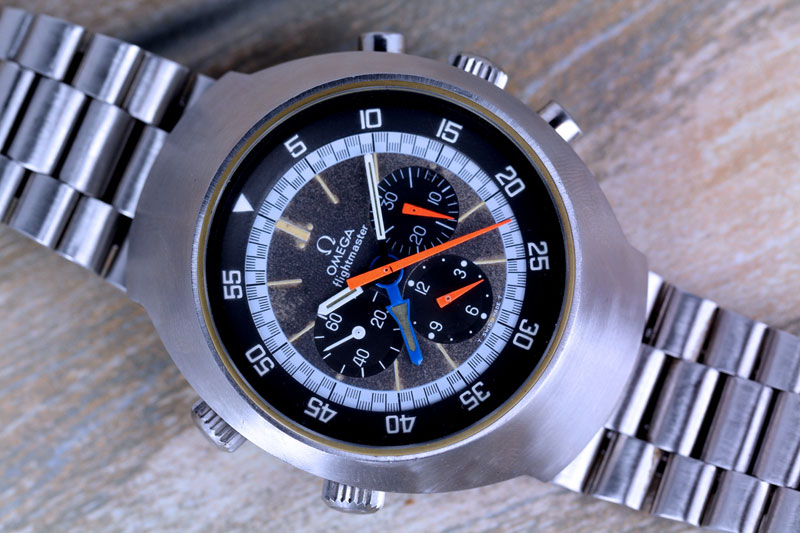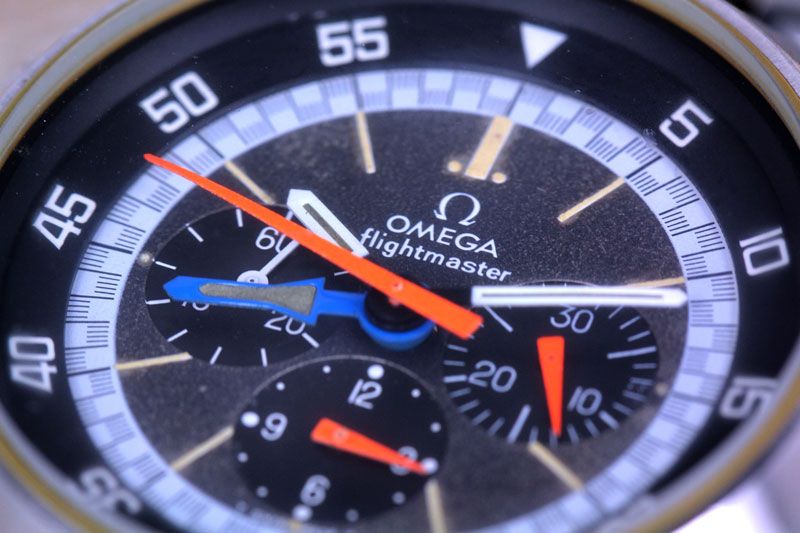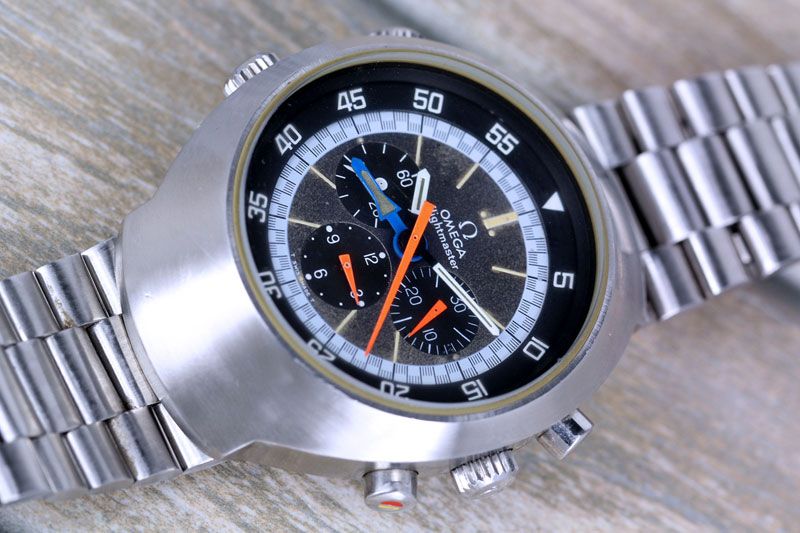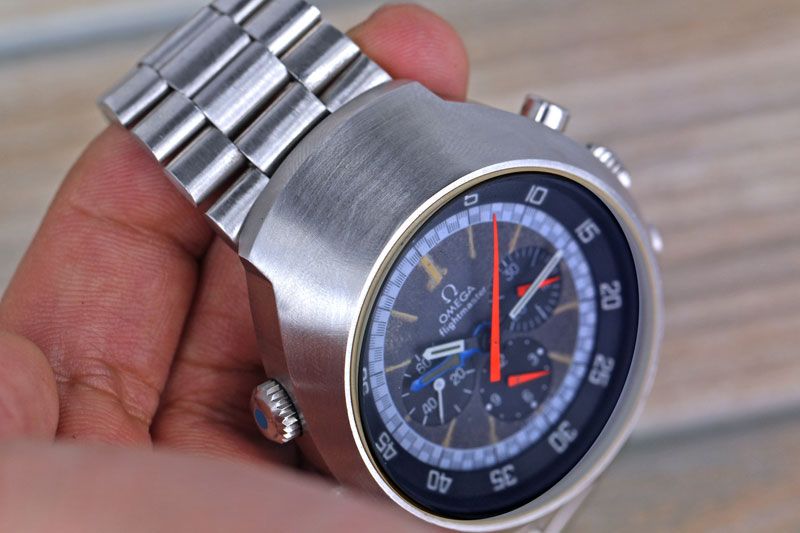Revisiting an Icon: The Omega Flightmaster

No one would argue that the most popular timepiece that ever came out from the halls of Bienne, Switzerland, was the 1969 Speedmaster. But on that same year, another icon was born, one of which was living under the shadows of its brethren, a manual-wound chronograph with a GMT-function, the original aviator piece from Omega, the Flightmaster.

The Flightmaster is perhaps one of the few rarely known variants of the Speedmaster lineup that didn’t carry the same name. A watch that was created to be the ultimate aviator watch of its era. First glance on the piece may be overwhelming for some, as it has a total of seven different hands performing different sets of task of simply telling the time and its variations. The relatively large case design makes it one of the bigger timepieces of that era. Measuring 42.6 mm case diameter without the crown, it is a huge timepiece to begin with. With a UFO shape like case and the absence of an outer bezel, this piece has vintage and classic written all over it, and an extremely good looking one at that.

The Flightmaster uses a Lemania based cal. 911 movement which is similar to the 1968 Speedmaster cal. 861 manual wound chronograph with an additional 12-hour GMT hand complication on top. With the standard chronograph push crowns at the 2 o’clock and 4 o’clock position, an addition of two crowns from the 10 o’clock and 8 o’clock (or 8:30 that some would argue) is needed to adjust the GMT-hand and the inner bezel respectively.

Omega managed to veer away from the confusion of too much complication on the piece by color-coding each function to its hands and to its crown. It can easily be noticed that the orange painted hands that serve as the chronograph (central seconds, 30-minute register and 12-hour register) can be activated. stopped and reset using the pushers on the right hand side that is similarly colored with a circular marking at the tip of the pushers. The same can be said on the left hand side of the piece with a blue marking for the GMT-hand crown and a black marking for the inner bezel crown. It is tactful of Omega to be including a color-coding scheme due to the complexity of the watch to operate. But it is evident that the circular markings on the crown can fade from constant usage.

There are two variations of this one of a kind vintage piece. First is the one shown on the pictures, the Flightmaster (ST145.035) powered by the 911 movement as mentioned above. A lesser-known variation of the Flightmaster is the ST145.013 that uses a same modified 861 movement (the caliber 910) with the key difference being that the small seconds sub-register is replaced with a 24-hour AM/PM indication. It is evident that the second version of the Flightmaster was not as well received as the original, the inability of a person to tell if the watch is ticking or not until the chronograph is engaged can somehow put off the collectors of vintage icons such as this. Consequently, the Flightmaster was made to function like the Speedmaster before it, and eliminating the small seconds sub-dial at the 9 o’clock position proved to be unbecoming of a chronograph piece. Not to mention it is a millimeter thicker than the ST145.013.

Regardless of your choice on which Flightmaster you would procure, that is if you are in the market for one. It is without question that the piece is already gaining strides to become an icon in its own right. No longer in the shadows of its famous brethren, the Flightmaster may very well be the best in its class. The current market price for the Flightmaster is roughly in the area of 4,000 USD (3,100 EUR).
Special thanks to Ditoy Aguila from PhilippineWatchClub for sharing this piece and for the impressive photos.
This article is written by Evan Yeung, contributing writer for Monochrome Watches.




6 responses
Great comparison of the two different models and a nice tribute to a watch overshadowed by the Speedmaster.
Thanks Meehna! The piece does deserve some spotlight of its own.
It’s funny that seconds sub-dials become standard and now the date window is seen as the make or break of a chronograph, but I’m slightly confused as to why the wearer wouldn’t be able to tell if the watch immediately was ticking without the small seconds feature?
Nice feature on a rare piece.
Thanks for the compliment Sean.
Well, it has become a standard these days for chronographs to have the seconds sub-dial ticking. The other piece mentioned on this article replaces that with a 24-hour hand instead. That would mean that at a glance, there won’t be any hands moving every second, hence one couldn’t immediately spot if the watch is ticking unless the chronograph is engaged.
I see now. Thanks a lot.
Beautiful watch. I happen to own one. It belonged to my father. Mine is in better shape than the one in the article.